Well-crafted content is crucial for enhancing discoverability, building credibility, and driving long-term growth in digital marketing. Marketers increasingly prioritize content marketing within their campaigns, recognizing that purposeful, well-organized content boosts both visibility and authority. Notably, 23% of businesses spend between $501 and $1,000 monthly specifically for blog content.
- What Are Topic Clusters?
- Benefits of Topic Clusters
- Tips for Building Effective Topic Clusters
- Common Topic Cluster Mistakes
- Bring Structure and Strategy Together With DMP
How information is structured and connected plays a crucial role in making content marketing more organized and data-driven. After all, well-crafted content remains one of the most important factors influencing search rankings. For businesses focused on organic reach, SEO topic clusters effectively connect related ideas, improve search relevance, and guide users and search algorithms through a cohesive digital experience.
What Are Topic Clusters?
Topic clusters are collections of related content organized around a central, comprehensive page known as the pillar content. Each cluster includes several supporting articles, often called subtopics or cluster pages, that dive deeper into specific aspects of the core subject.
The pillar piece acts as a central anchor, offering a broad overview of the topic while linking to each supporting article. In turn, these supporting pages link back to the pillar, creating a well-organized network of content that is easy for users to navigate and for search engines to crawl efficiently.
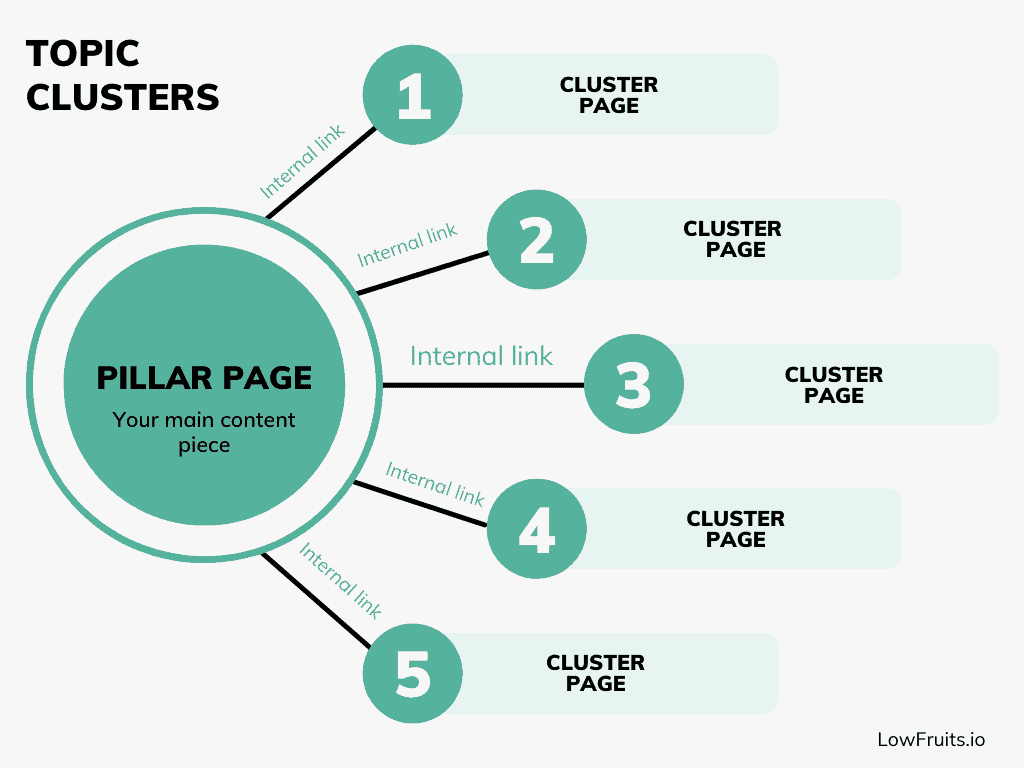
Image from LowFruits
Topic clusters build topic authority by properly organizing content. Instead of flooding a website with unconnected posts, they group pages under one central theme, improving topic relevance and strengthening the site’s structure and authoritativeness over time.
Benefits of Topic Clusters
As search algorithms evolve, context and topic relationships are becoming more important than exact keyword matches. Topic clusters support this shift by organizing related content into clear, structured content silos.
Below are the key advantages of incorporating topic clusters into a content strategy.
1. Improved SEO Performance
Topic clusters strengthen alignment with Google ranking factors. When content is structured into logical groups with effective internal references, it becomes easier for search algorithms to understand what a website is about. This structure influences indexing and increases the chances of visibility for multiple related queries.
2. Easier Navigation for Readers
Leveraging topic clusters improves website credibility by making content easier to read and navigate. They help readers navigate complex information efficiently, reducing confusion and repetition. This streamlined experience encourages longer engagement and builds trust with new and returning customers.
3. Stronger Internal Linking
Internal linking plays a crucial role in improving how content is organized and indexed across websites. Topic clusters naturally enhance internal linking, as each cluster page links to the pillar content and related pages within the group. This interconnected structure distributes authority evenly across pages and improves search engine crawling.
4. Increased Website Authority
A website with well-developed topic clusters demonstrates depth and credibility in specific subject areas. When multiple high-quality articles are strategically connected around a central theme, search engines begin to recognize that domain as an authority.
Topic clustering is even more powerful when paired with high-quality content. Fifty-nine percent (59%) of marketers consider high-quality content to be the most effective way to boost performance. Clustering trustworthy content not only supports individual page rankings but also strengthens overall domain authority.
For businesses working with an SEO agency in the Philippines, building website authority through topic clusters offers a path to sustained search growth. Agencies can strategically plan content, align it with audience needs, and develop structured systems that benefit both users and search engines.
Tips for Building Effective Topic Clusters
Effective silos begin with a solid content structure. Here are practical tips to create silos that enhance visibility, organization, and authority.
1. Group Existing Content by Theme
Start with a thorough content audit to identify which articles relate to each other and organize them into provisional clusters. This helps reveal gaps, remove duplicates, and find opportunities to strengthen the overall structure
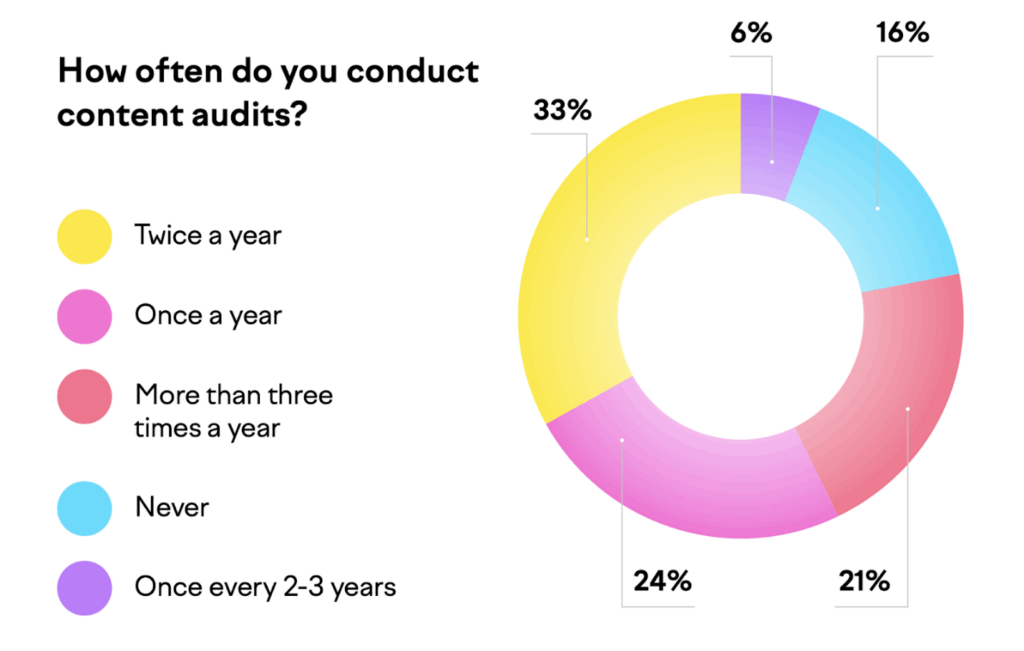
Image from Semrush
2. Choose a Strong Pillar Topic
Select a broad, high-value topic that aligns with business goals and reflects strong search demand. The topic should be specific enough to maintain focus while broad enough to support multiple related subtopics.
3. Conduct Keyword Research
Effective topic clusters begin with a clear understanding of what users search for. Keyword research reveals search behavior and the depth and direction for new content. Tools like Google Search Console, Semrush, or Ahrefs can uncover relevant queries and low-competition terms that businesses can leverage to produce relevant blogs or infographics.
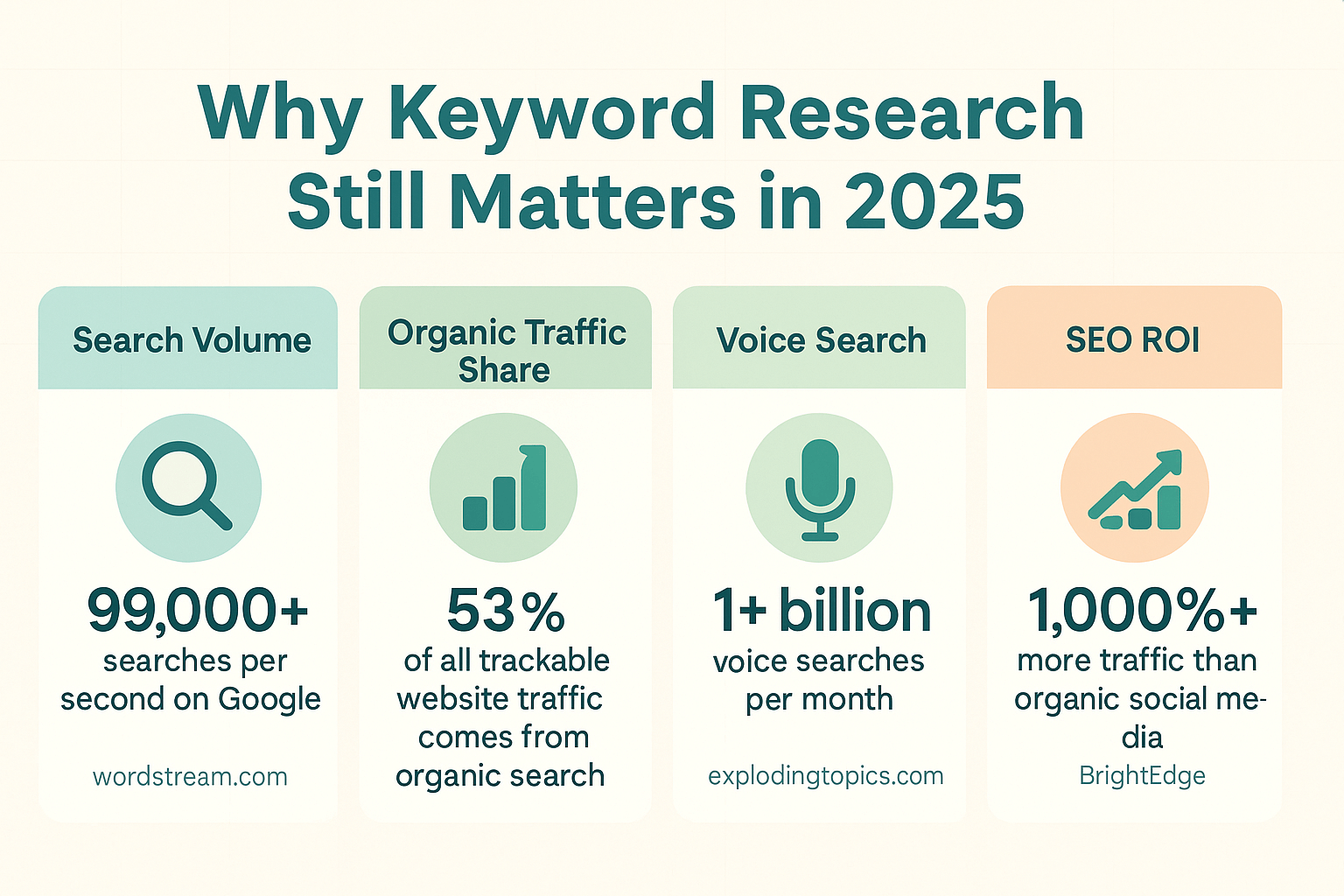
Image from Thrive Themes
4. Outline Each Cluster Before Writing
Plan how the pillar and supporting pages will be structured and linked. A clear framework improves user navigation and helps search engines understand topic relevance. Combining evergreen topics with timely content keeps clusters useful and current.
5. Focus on One Cluster at a Time
Rather than launching several clusters at once, concentrate on building a single, well-organized cluster first. Once that silo gain traction and gaps are identified, marketers can refine their approach and expand the model to other key topics.
Common Topic Cluster Mistakes
Even the most well-planned content strategies can underperform if topic clusters are poorly executed. Identifying common pitfalls early can prevent wasted effort and improve search performance. Key mistakes to watch for include:
1. Weak Pillar Content
The pillar page is the silo’s foundation. If it lacks substance or structure, the cluster loses its anchor. Users may find it unhelpful, and search engines may not view it as authoritative enough to rank well. Without a solid base, marketers will have a challenging time producing content that ranks.
2. Overlapping or Redundant Cluster Pages
Each cluster page should focus on a distinct subtopic. Repeating similar ideas or using the same set of keywords across multiple pages creates redundancy, which confuses users and search engines. It dilutes topical clarity and increases the risk of keyword cannibalization, where two pages compete for the same search terms.
3. Broken or Missing Internal Links
A strong internal linking system connects cluster pages to the pillar and to one another. Still, around 68% of websites contain at least one broken link, an issue that can significantly hurt a website’s SEO performance. Missing or broken links make it harder for both users and search crawlers to follow topic relationships.
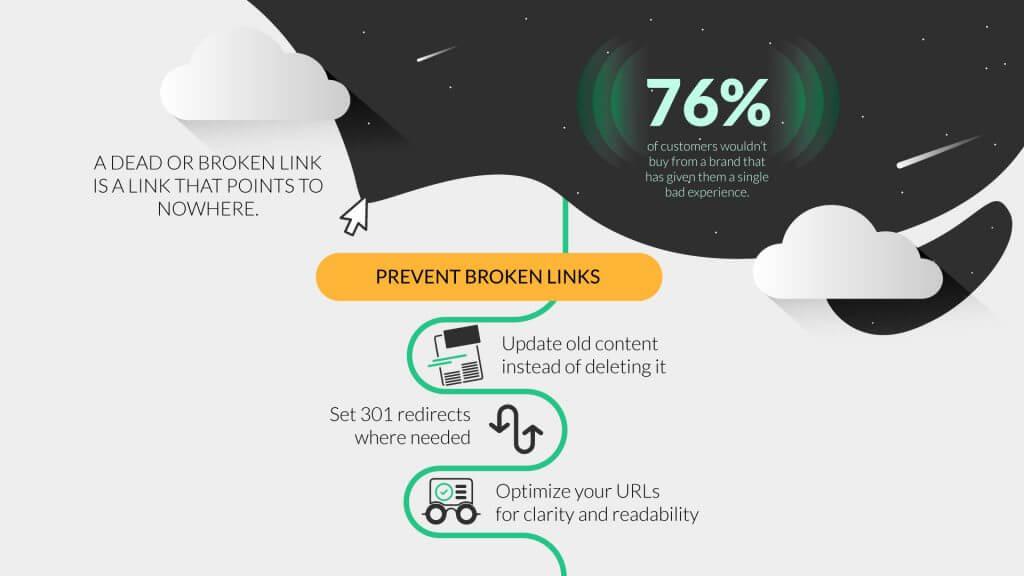
Image from HostPapa
4. Misaligned Search Intent
Well-written content can fall short in search engine result pages if it doesn’t reflect how users actually phrase questions or search for information. When cluster pages don’t align with user intent, bounce rates rise and engagement drops. So each page should clearly address a specific user need or question.
5. Neglecting Ongoing Optimization
Clusters need to be regularly updated based on performance data. Many marketers ignore proper monitoring of different metrics, like engagement, rankings, and internal click-through rates, limiting a cluster’s growth potential.
Regularly updating internal links, adding new content, and refining structure based on analytics helps maintain visibility in search results and supports continued traffic growth.
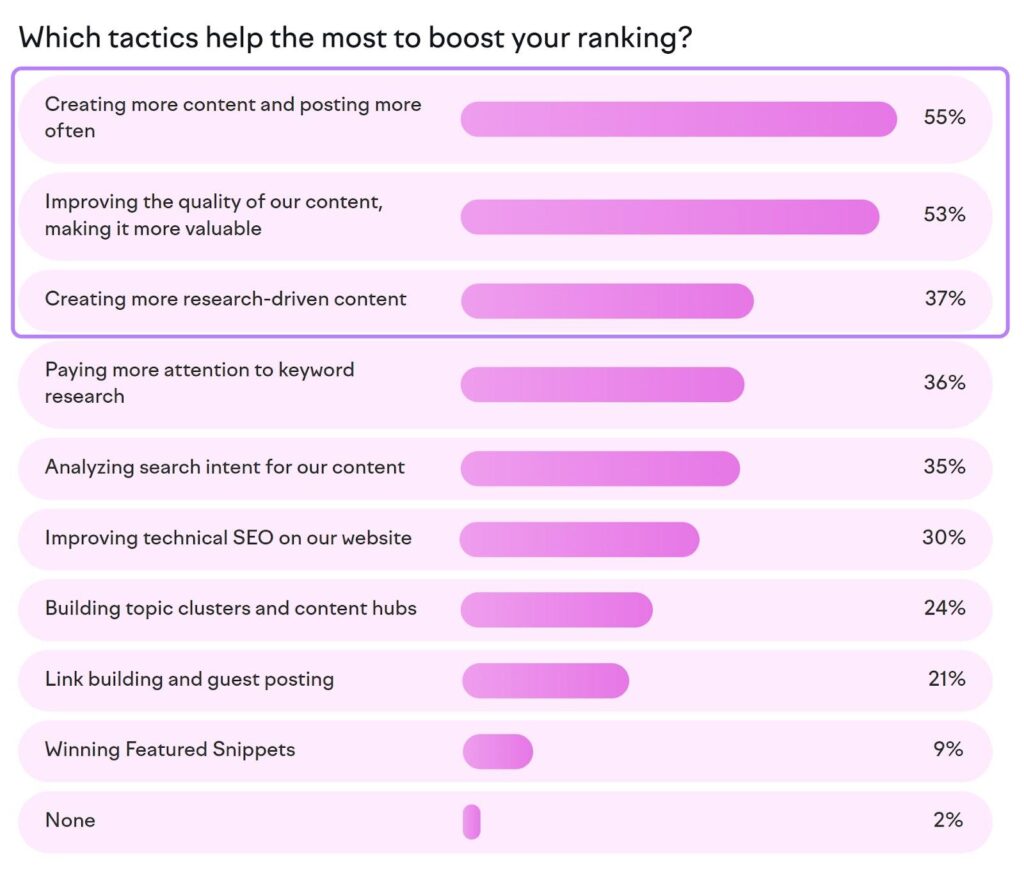
Image from Semrush
6. Ignoring User Experience in Navigation
Engagement suffers greatly if users can’t move between the pillar and related pages. In fact, 53% of users leave a site after viewing just one page when content loads too slowly. Poor UX, including broken links, cluttered layouts, or weak call-to-actions (CTA), interrupts the cluster’s flow and reduces customers’ time on site.
Bring Structure and Strategy Together With DMP
Topic clusters bring clarity and purpose to content marketing campaigns. They effectively connect related pages to enhance search engine visibility and user experience, making them a smart strategy for marketers focused on long-term results. For businesses leveraging outsourced SEO services, this approach offers a practical path to stronger SERP performance.
If you’re looking to strengthen your content strategy, Digital Marketing Philippines offers expert SEO and content marketing services designed to build clear, well-structured content systems that boost organic rankings and enhance brand image. From content mapping and topic cluster development to optimization and internal linking, our team delivers strategies that turn structure into measurable results.
Contact us today to learn how we can help shape your content strategy for sustainable success.
References:
https://www.semrush.com/blog/topic-clusters
https://blog.hubspot.com/marketing/topic-clusters-seo
https://terakeet.com/blog/topic-clusters/
https://moz.com/blog/blog-topic-clusters
Jomer B. Gregorio is a well-rounded expert when it comes digital marketing. Jomer is also known as a semantic SEO evangelist and practitioner. Check out our Digital Marketing Services today and let us help you in achieving positive and profitable results for your business.
